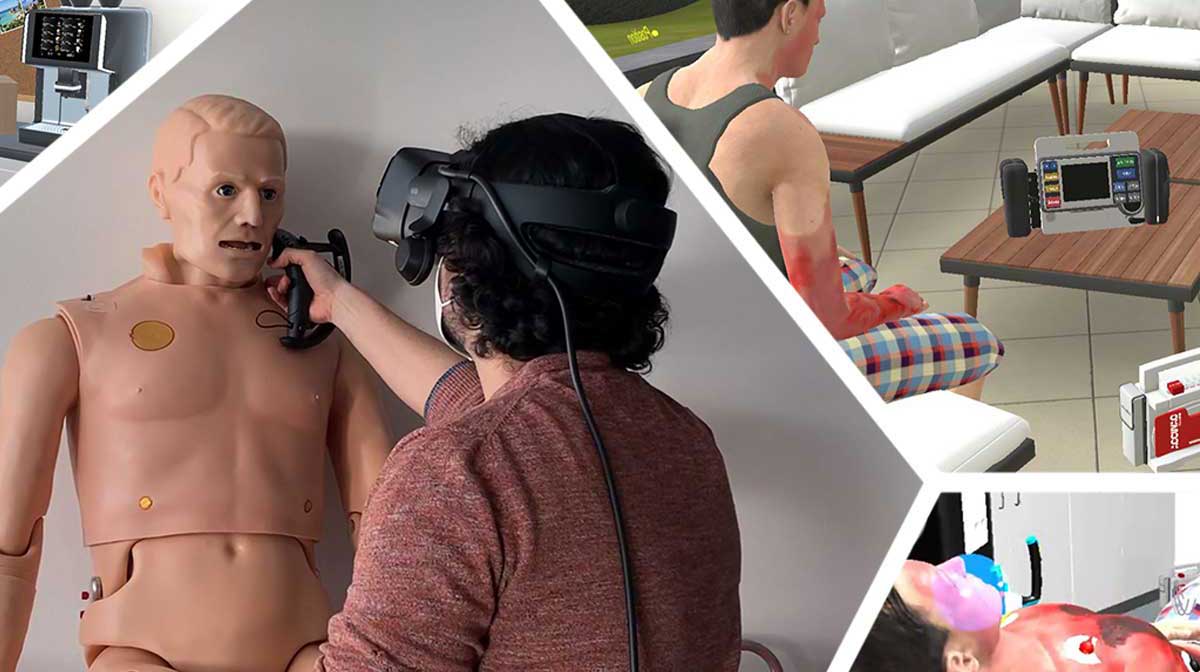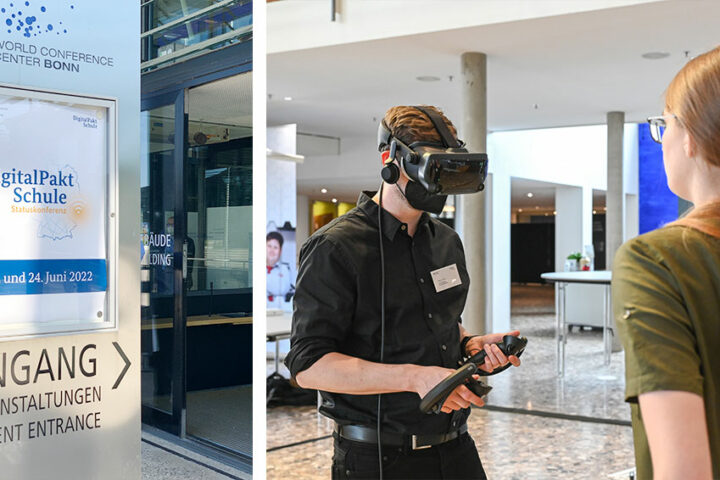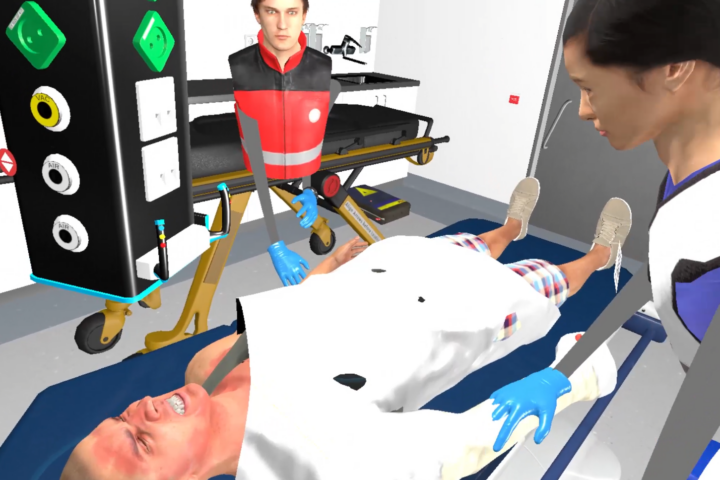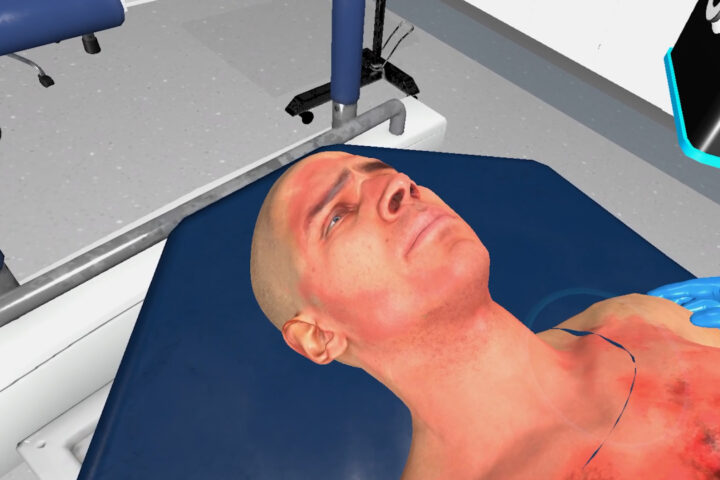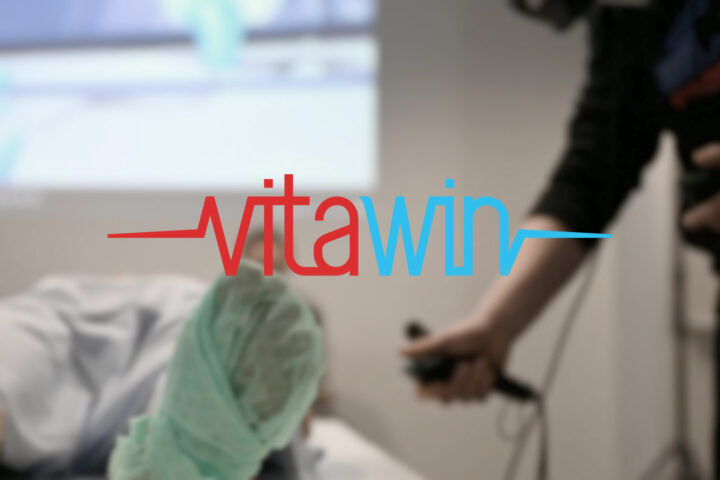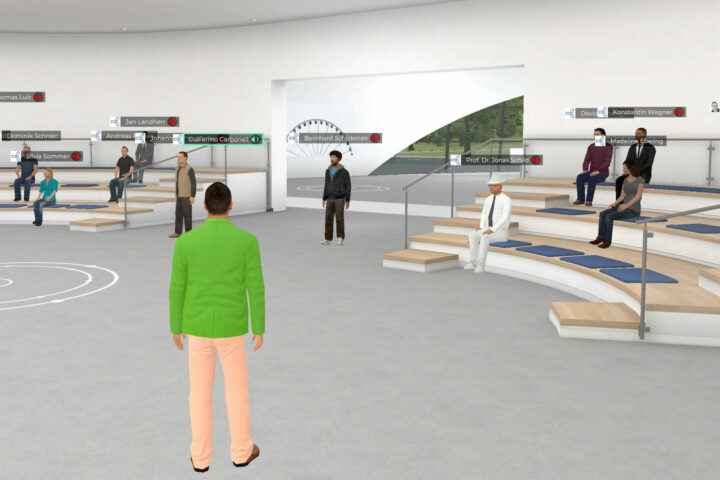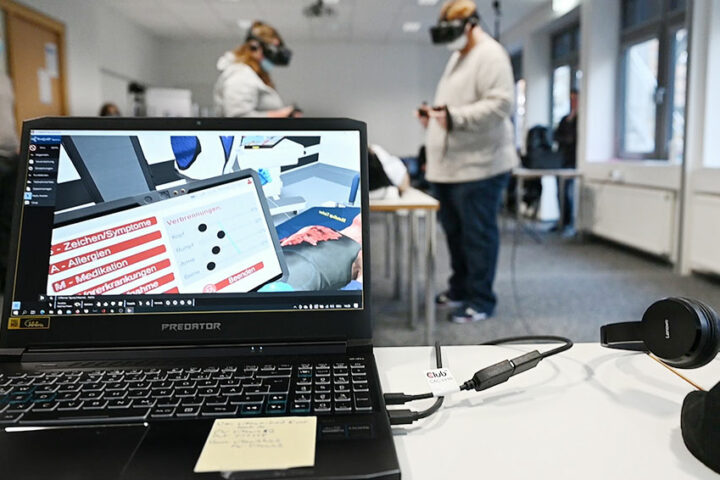ViTAWiN
The acronym ViTAWiN stands for virtual augmented training for education and training in interprofessional emergency care. The project has been funded by the Federal Ministry of Education and Research (BMBF) since March 2019 as part of the Virtual and Augmented Reality (VR/AR) in Vocational Education and Training (VRARBB) programme. ViTAWiN is based on a VR training environment for emergency paramedic training already developed in the EPICSAVE project. For more information on the consortium, advisory board, news and publications related to the project, please visit our project website.
A brief overview
In ViTAWiN, an interdisciplinary consortium is developing, testing and evaluating a multi-user Virtual Reality (VR)/ Augmented Reality (AR) simulation environment. The project addresses the educational needs of teachers and learners in emergency paramedic and emergency nursing training. This enables a broad, user-oriented and sustainable integration of a didactic design into educational practice. The IREX research group is responsible for the media-technical conception, the support of the developers by programming tracking tools as well as for the project management and evaluation.
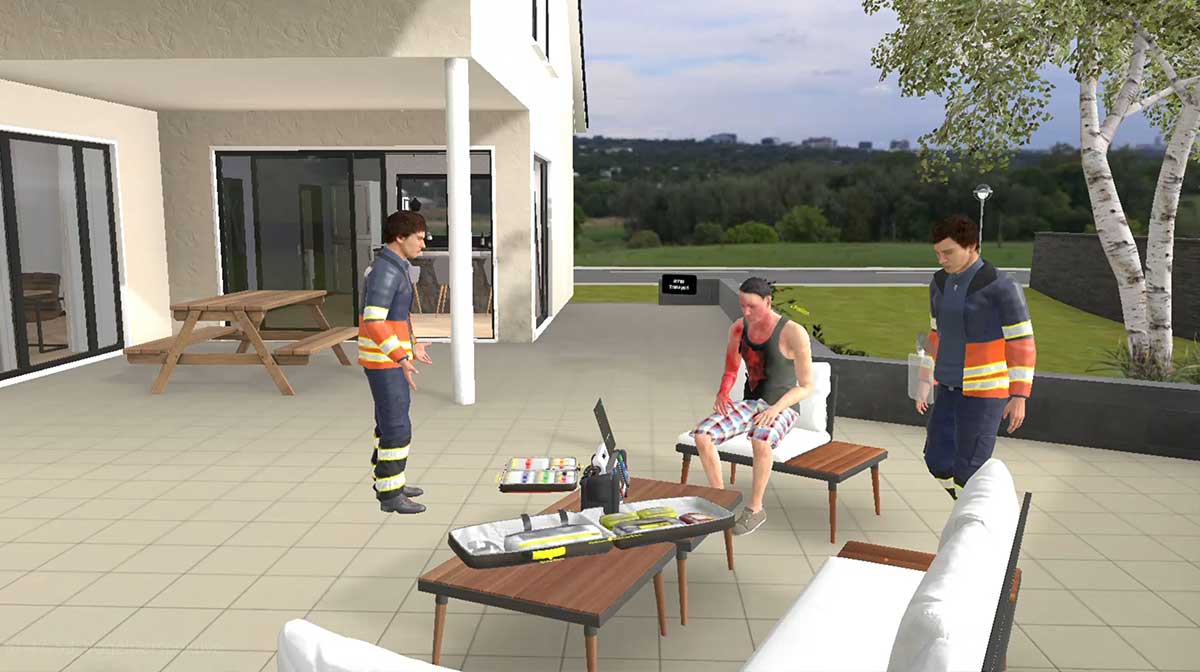
fig. 1: Emergency paramedics at the scene
The project
The technology
The introduction of modern VR and AR technologies should enable a highly interactive, immersive and collaborative training and learning environment. The realistic and spatialised 3D representations in VR/AR environments link directly to everyday professional experiences and are thus highly authentic and contextualised. Through the use of technology, practical learning and work experiences are made possible for various curricular learning fields - in accordance with educational needs.
The scenario
The application is divided into three sections: Break Room, Terrace and Shock Room. Before the actual simulation training starts, the participants learn about the controls and the medium of virtual reality (VR) in a tutorial. Here, simple tasks are completed that work in the same way in the training. The tutorial is followed by a burn scenario and first aid by the emergency rescue service. Once this is completed, the emergency rescue service and emergency nursing teams meet in the shock room to hand over the patient. The emergency nurses then take over the patient and prepare the patient for further treatment.
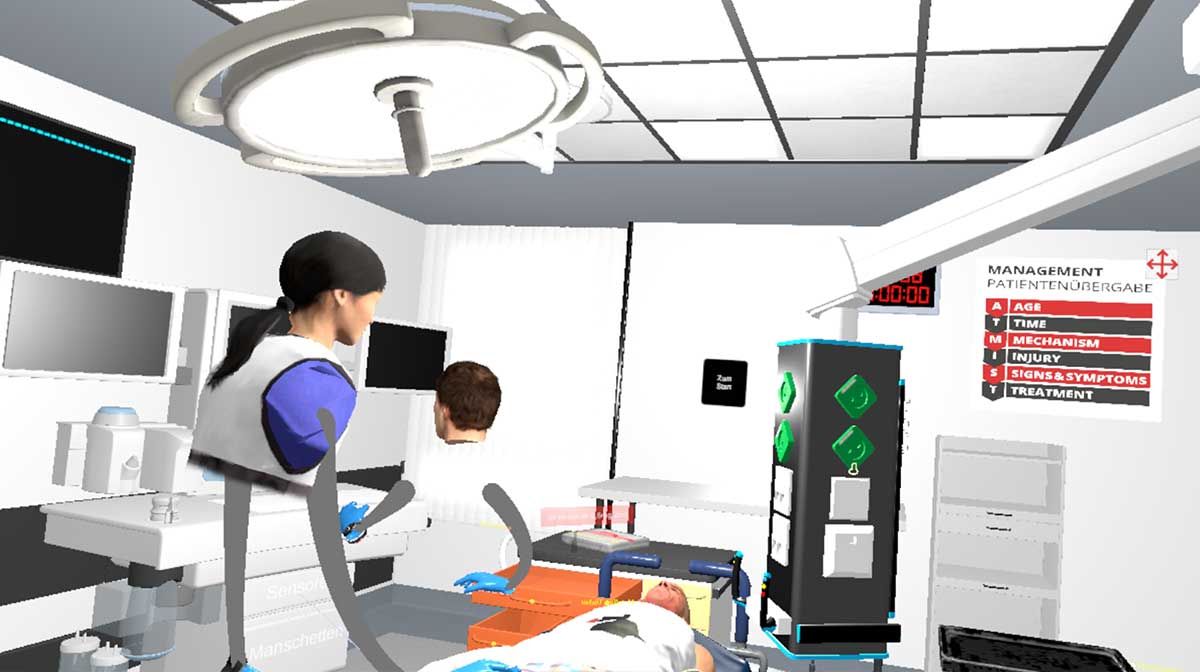
fig. 2: Emergency nurses in the shock room
Interdisciplinarity
During the handover of the patient, the participants from both training centres communicate remotely with each other and are virtually in the same room with their own avatars. In this way, the exchange of information between different locations and disciplines can be trained and simulated.
Haptics
A physically present simulation mannequin is used for augmented virtuality. The position of the manikin is transferred to the virtual patient in the prototype using tracking software based on machine learning. For the emergency paramedic scenario, the manikin sits on a chair while the virtual patient is on a terrace. The emergency care participants in the shock room use a lying simulation manikin. During treatment, the manikin can be touched, enhancing the participants' immersive experience.
fig. 3: Demo video: Integration of haptics and emotions
Emotions
Another important aspect is emotions. With the help of these, participants from the emergency rescue service and emergency care can better assess the patient's condition. The virtual patient reacts to touching sensitive areas with emotions and expressions of pain. As soon as a painkiller has been administered, the patient calms down and the tension in the facial expression decreases.
Showroom: Emotions on a virtual patient
Creating a higher level of realism


Podcast about Immersive Virtual Training with ViTAWiN
Today, the German Federal Institute for Vocational Education and Training (BIBB) released a podcast featuring an interview with Jonas Schild about the project ViTAWiN and on how emergency nursing and...Continue reading
IREX at the Iteration 2.0 of the TH Köln study program Code & Context
The explorative bachelor program “Code & Context” of the TH Köln celebrated its first graduating class with the exhibition Iteration 2.0. On October 21 and 22, the event presented the...
Status Conference 23 and 24 June 2022 – DigitalPakt Schule
Since 2019, the DigitalPakt Schule has been supporting schools in Germany with investments in digital education infrastructure. At the conference, we will gain insights and present our project ViTAWiN. Continue reading
ViTAWiN Demo: Interdisciplinary Training
Our demo video shows the initial treatment by the emergency paramedics to the handover of the patient to the hospital and further treatment in the shock room by the emergency nurses.Continue reading
ViTAWiN Trailer on Emotions and Haptics
In our second trailer we show how the integration of emotions and the use of the haptically present training manikin was implemented in our research project.Continue reading
ViTAWiN trailer on interdisciplinary cooperation
We are proud to show you our new trailer for the ViTAWiN project. It shows impressions of the interdisciplinary work in the consortium.Continue reading
Last advisory board and consortium meeting
In the last meetings of the consortium and the advisory board we present the final results and discuss the last steps in the project ViTAWiN.Continue reading
Project Partners of ViTAWiN Work Together in Virtual Environment
In this meeting, the development of the Mixed Reality prototype as well as the first results from the evaluations are of particular importance.Continue reading
ViTAWiN at 5th Niedersächsischer Digitalgipfel
Topic of this event: "Digitalisation: Booster or Collapse for the Public Health System?" Dr. Guillermo Carbonell represented the project ViTAWiN and took part in the panel discussion.Continue reading
Evaluation of Mixed Reality Prototype
The multi-user Mixed Reality prototype developed in the project ViTAWiN was evaluated in a series of study sessions that started on September and finalized on November 2021.Continue reading

